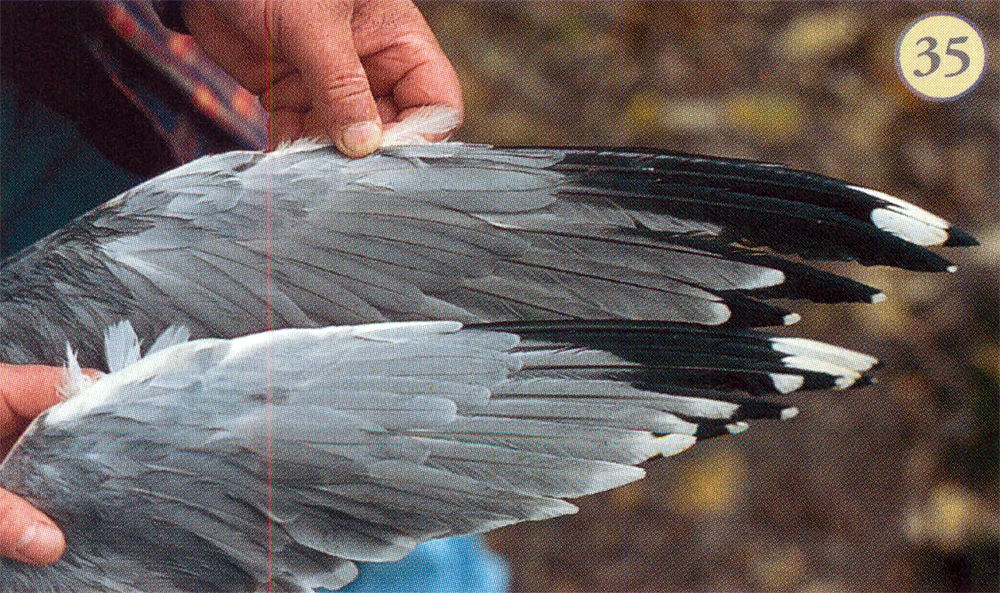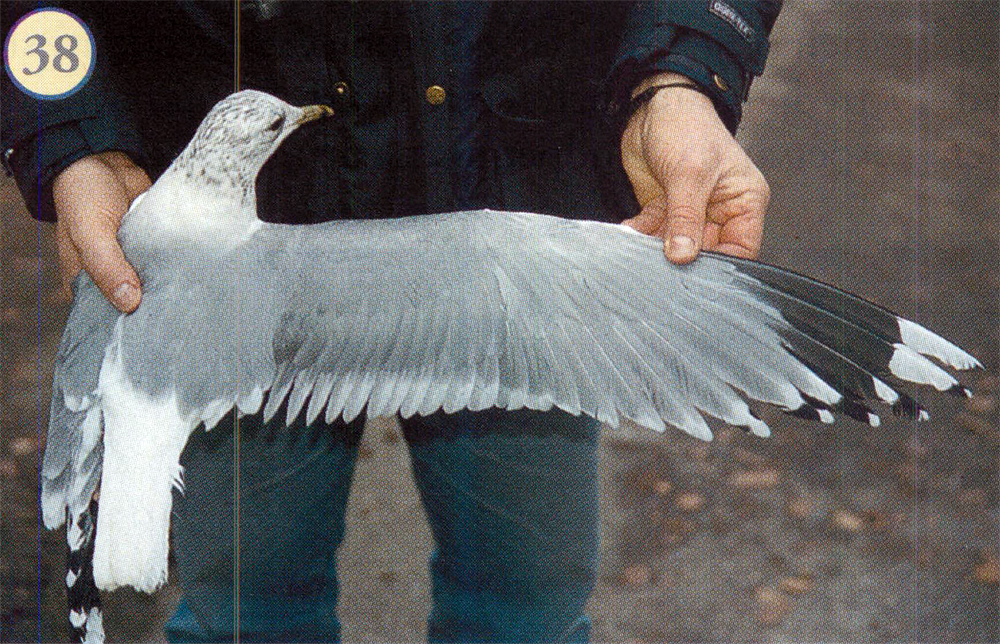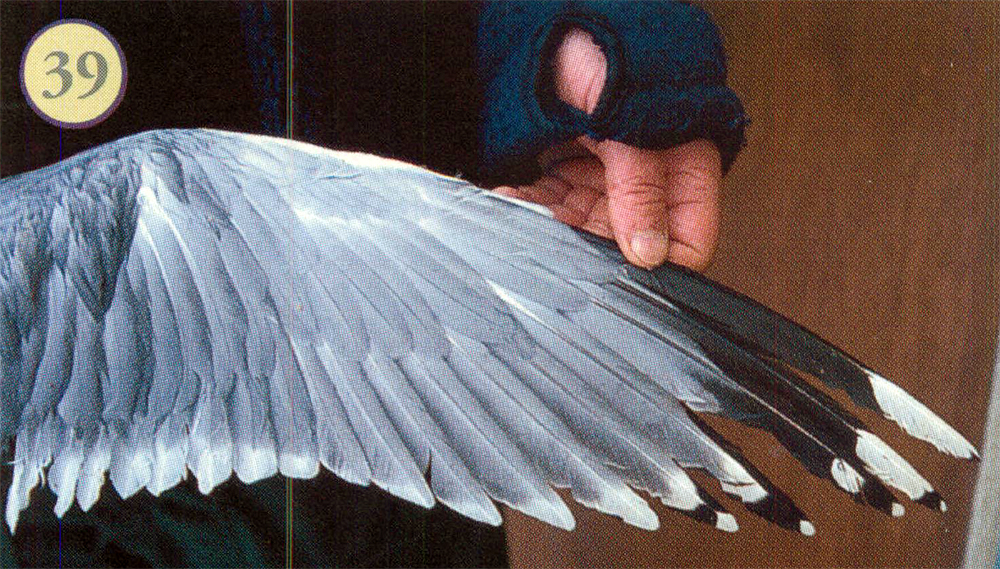 Mew Gull Larus canus canus; heinei; kamtschatschensis; brachyrhynchus
Mew Gull Larus canus canus; heinei; kamtschatschensis; brachyrhynchus
(last update: March 12, 2012)
Mew Gull canus SVS 7118390 5cy/9cy/11cy, 19 November 1995, 01 January 1999 & 24 December 2001, Malmö, Sweden.
Figure 35: 7118390 lower bird (375/92,5), same bird again in fig 38 & fig 39: five, eight & 11-year old bird (5CY, 9CY, 11CY), probable canus male. 19 November 1995. Originally ringed 12 December 1991. In the two older plumages the mirror on P10 is breaking through the black band and the black marking on P5 is missing on the eleventh-year old bird. Otherwise the wing remains almost comparable throughout the three age-classes.
In the data set of 12 five-year old birds, five have three mirrors. The majority of the birds have black on six primaries but the range is 5-8. The only bird which shows black on P3 is depicted in fig 25. The black alula is not a safe criterion to age three-year old birds, as it still present in one five-year old bird as well (see fig 26). All 12 birds have white tails and white tips on P7-P8. A mature bird in which the mirror on P10 merges with the white tip (broken black sub-terminal band on P10) is shown in fig 27. This P10 pattern becomes more common on older birds, usually from about seven-year old plumage, but sometimes seen in younger birds (e.g. the second-year bird in fig 17).
Our material indicates that the Mew Gull attains a mature plumage in its fourth year (4CY-5CY). After the fourth year, only minor changes occur in the plumage resulting in slightly more white and less black in the wing-tip; for example, the mirror on P10 may merge with the white tip in some individuals. Such slight changes in wing-tip pattern are illustrated by the bird in fig 23 and fig 29, four years old and seven years old respectively.
We add a series of birds in three different adult plumages (fig 35-39). The series 35 (lower bird) and fig 38-39 show a probable male canus in its fifth, eight and eleventh plumage. In the two older plumages the mirror on P10 is breaking through the black band and the black marking on P5 is missing on the eleventh-year old bird. Otherwise the wing remains almost comparable throughout the three age-classes.
In a very well-studied Estonian population (canus) they found that the amount of white in the wing-tip diminished in older plumages (after the sixth breeding-season). This may be explained by older birds having a weaker condition because of age, when they are compared to “middle-age” breeding birds (Kalev Rattiste and Lauri Saks, unpublished data).
Figure from:
Is it possible to age subadult Mew Gulls Larus canus?
by: Kenneth Bengtsson & Lennarth Blomquist, publication in: Anser 2-42(2003): p 73-92.

Below is figure 38: 7118390 (375/92,5), same bird in fig 35 (lower bird) & fig 39: five, eight & 11-year old bird (5CY, 9CY, 11CY), probable canus male. 01 January 1999. Originally ringed 12 December 1991.
In the two older plumages the mirror on P10 is breaking through the black band and the black marking on P5 is missing on the eleventh-year old bird. Otherwise the wing remains almost comparable throughout the three age-classes.

Below is figure 39: 7118390 (375/92,5), same bird in fig 35 (lower bird) & fig 38: five, eight & 11-year old bird (5CY, 9CY, 11CY), probable canus male. 24 December 2001. Originally ringed 12 December 1991.
In the two older plumages the mirror on P10 is breaking through the black band and the black marking on P5 is missing on the eleventh-year old bird. Otherwise the wing remains almost comparable throughout the three age-classes.
